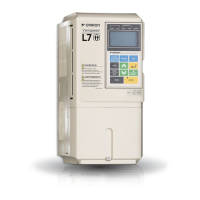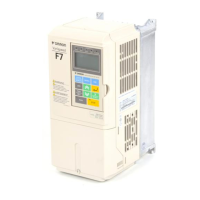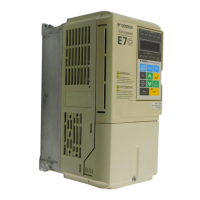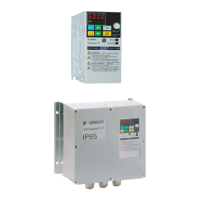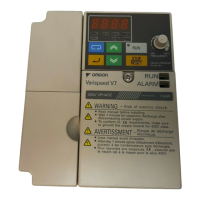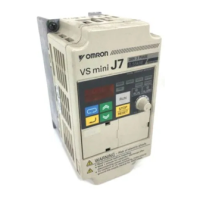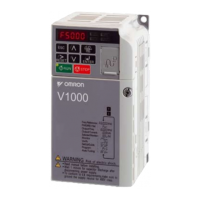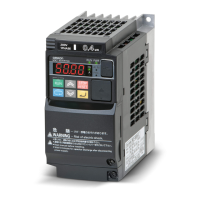Wiring Page: 2 Connection Diagram Shows the electrical connection diagram for the inverter, illustrating main and control circuits.
Wiring Check Lists essential checks to perform after wiring is completed to ensure correctness and safety.
LED Monitor; Digital Operator and Modes Page: 3 LED Monitor JVOP-163 Explains the operation status indication using combinations of LED lights (RUN, DS1, DS2).
Digital Operator JVOP-160-OY Describes the Digital Operator's keys, display, and mode indicators for inverter operation and parameter setting.
Inverter Modes Outlines the five inverter modes (Drive, Quick Programming, Advanced Programming, Verify, Autotuning) and their primary functions.
Switching Modes Explains how to navigate between different inverter modes using the MENU and DATA/ENTER keys.
Drive Mode Details how to operate the inverter, display monitor parameters, and change frequency references in Drive mode.
Quick Programming Mode Describes setting basic parameters for elevator operation like speeds and acceleration/deceleration times.
Verify Mode Describes how to display and change parameters that differ from their default factory settings.
Autotuning Mode Explains how autotuning automatically measures and sets motor data for optimal performance.
Start Up Procedure Page: 4 Power Up Lists crucial checks to perform before switching on the power supply and describes the display after power up.
Control Mode Selection Guides on selecting the appropriate control mode (V/f, Vector) based on motor type and encoder.
Autotuning Explains the autotuning function for setting V/f patterns, motor data, and encoder data automatically.
User Parameters Page: 5 Setup Settings: A Details parameters for language selection, parameter access level, control method, initialization, and password.
Tuning Parameters: C Details parameters for acceleration, deceleration, S-curve settings, and slip compensation.
Reference Parameters: d Explains parameters for setting various speed references, including nominal, intermediate, and leveling speeds.
Motor Parameters: E Covers V/f pattern settings, motor setup parameters (rated current, slip, poles, etc.), and PM motor adjustments.
Option Parameters: F Details parameters related to PG option cards, including PG constant, rotation direction, and division ratio.
Motor Autotuning: T Details parameters for motor autotuning, including mode selection and motor data input.
Monitor Parameters: U Lists parameters for monitoring inverter status, operation status, fault history, and input/output signals.
Parameter Settings by Function Page: 6 Protective Functions Explains stall prevention, motor torque detection, car stuck detection, and other protective functions.
Inverter Protection Covers inverter overheat protection, input/output open phase detection, ground fault detection, and cooling fan control.
Input Terminal Functions Describes functions for digital inputs, including baseblock, external fault, and timer functions.
Output Terminal Functions Explains functions for digital outputs like inverter operation status, fault signals, and brake commands.
PG Option Cards Details PG option card setup, including PG constant, rotation direction, and division ratio.
Rescue System Explains how to use the rescue system, including power supply requirements and wiring examples.
Automatic Fault Reset Describes the automatic fault reset function, including number of resets and fault relay operation.
Memobus Communications Details MEMOBUS communications configuration, specifications, message format, and error codes.
